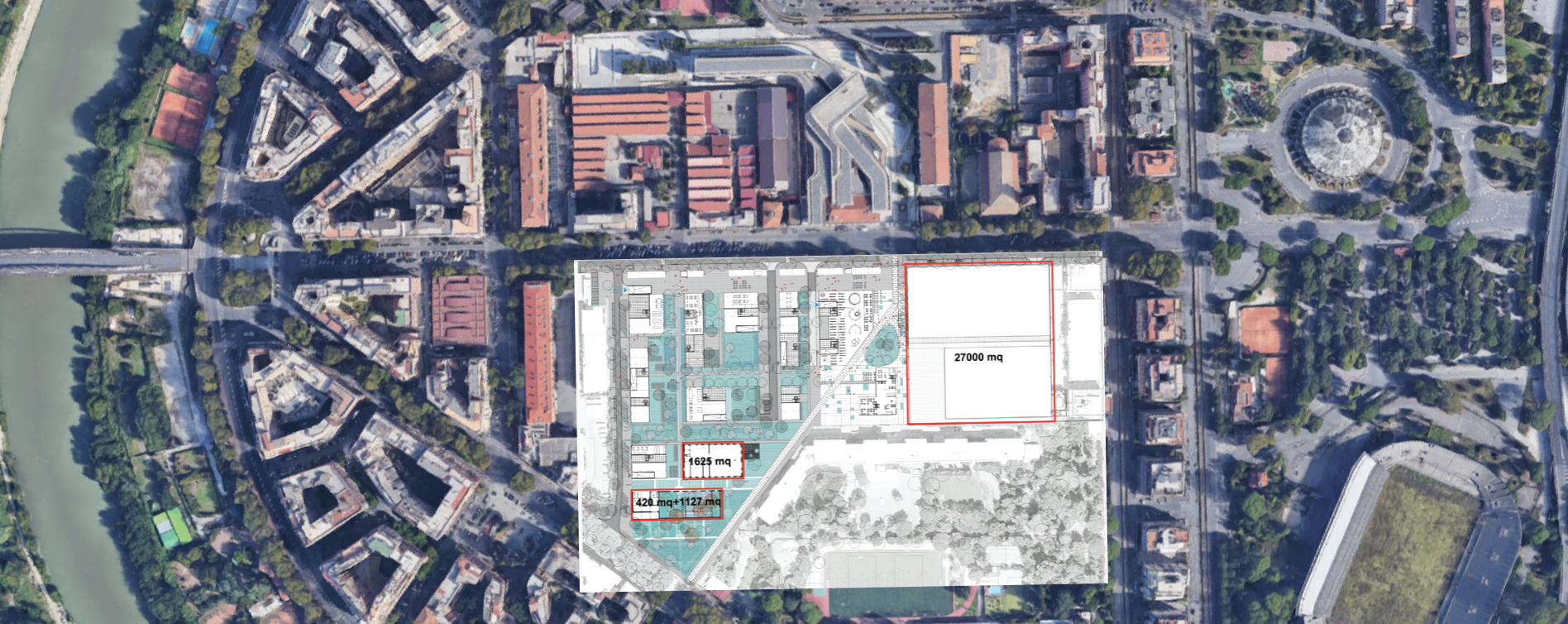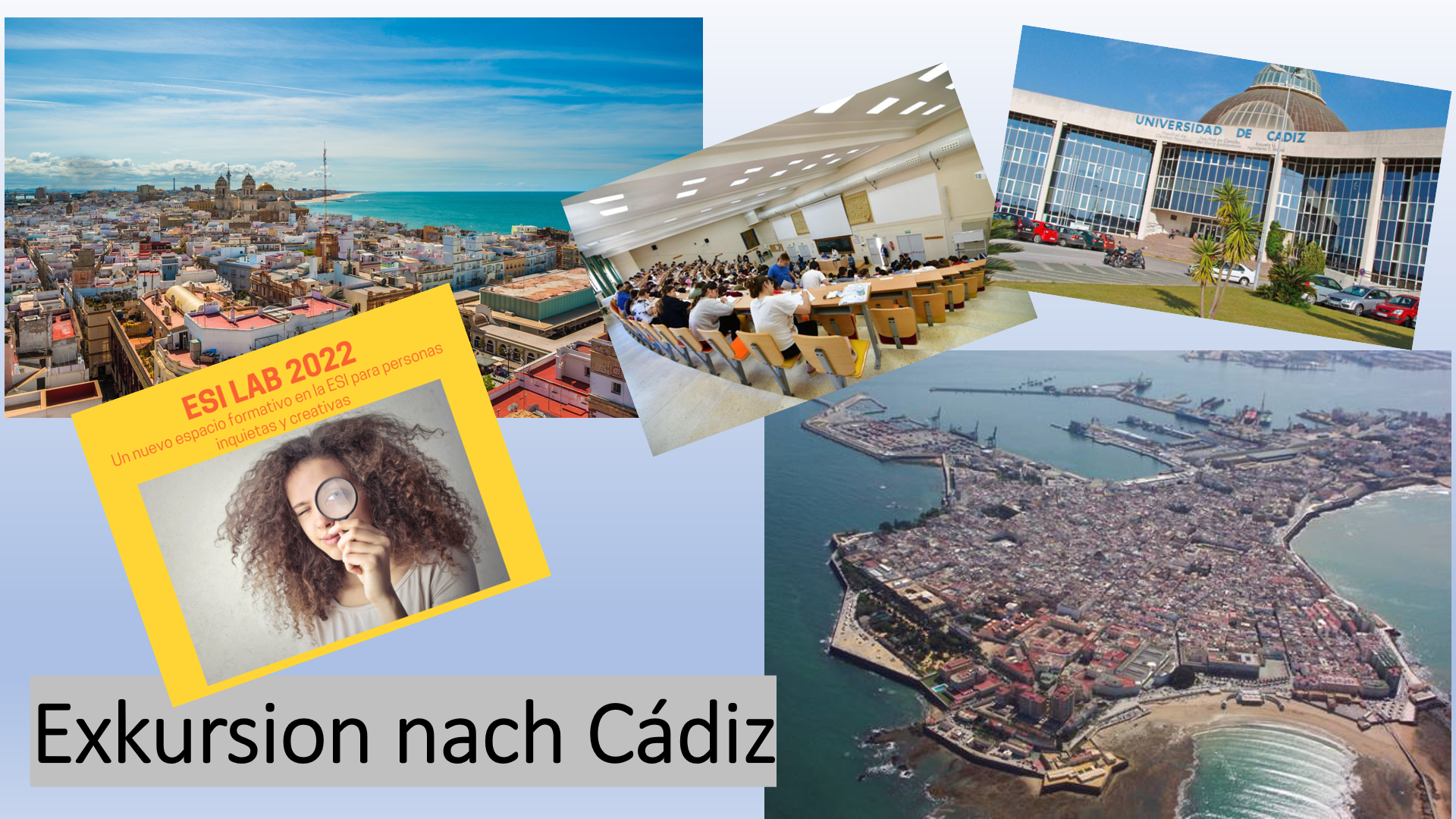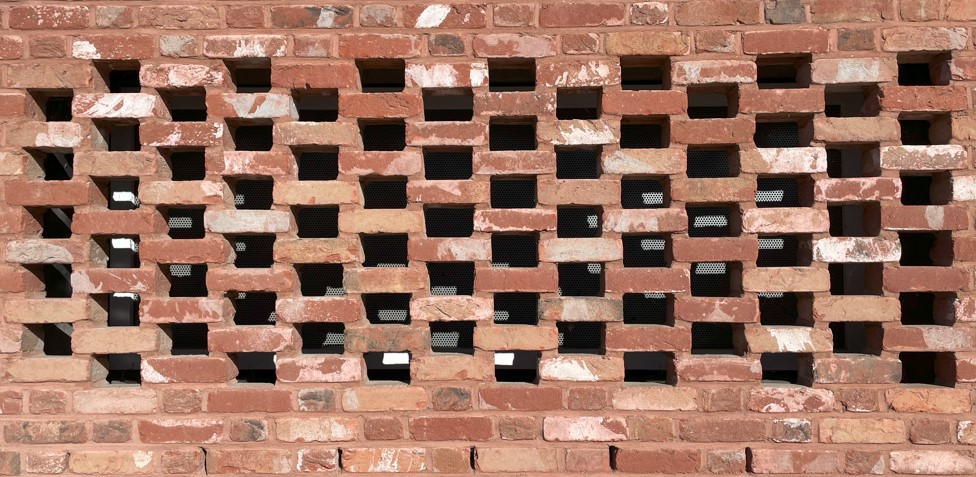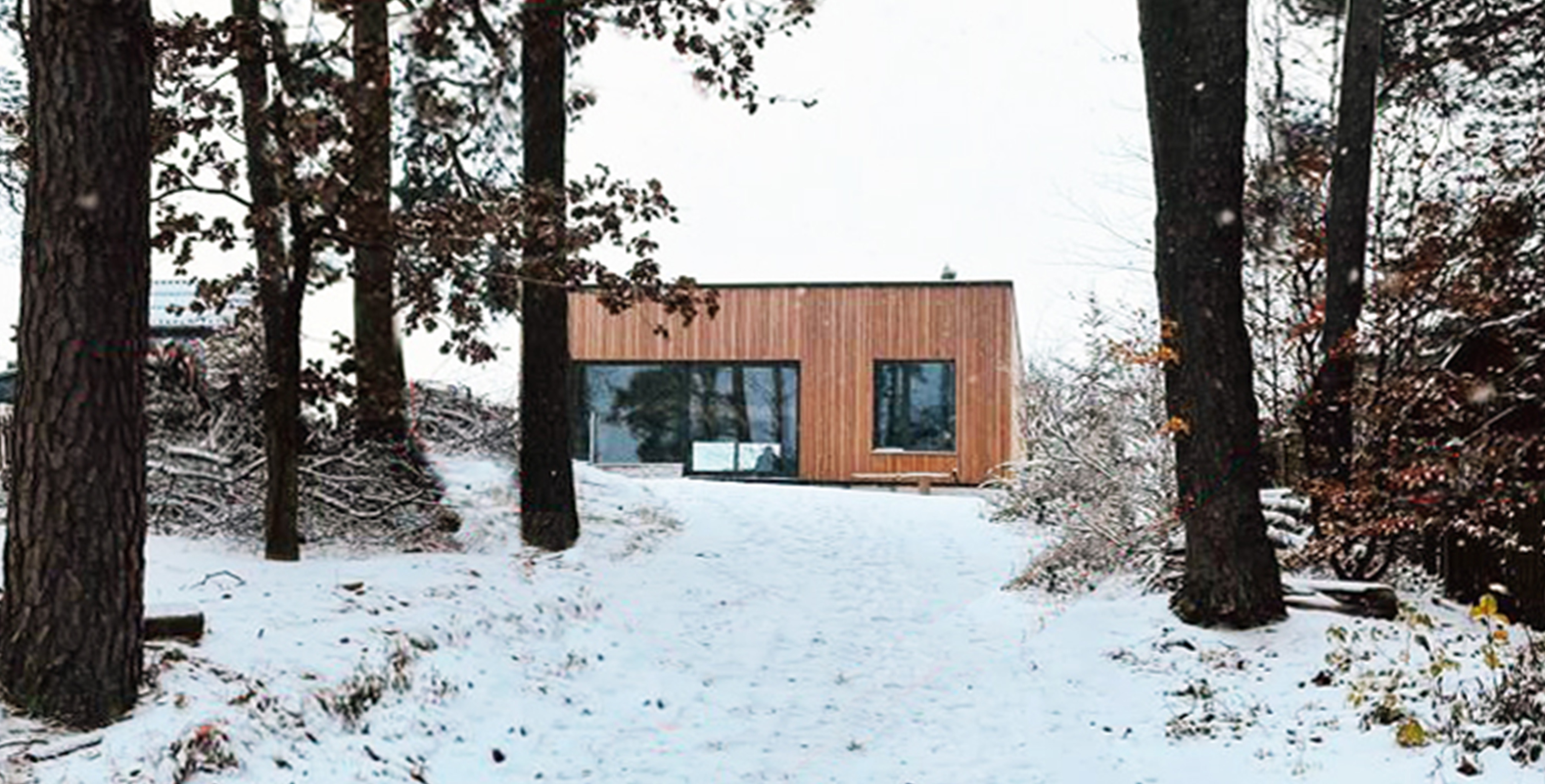
- Dozent/in: Wolfgang Jung
- Dozent/in: Quy Phu Nguyen


>Focus
Empty industrial spaces and structures offer the opportunity to explore and propose unique spatial and material experiences. They are evocative spaces where restrictions are at the same time their potentiality.
How to activate these spaces? How to explore them in a reversible way? Light and temporary insertions are a strategy of dialogue, of verification and at the same time of discovery. They are reversible installations that offer new visions of the same space.
>The Exercise
Inside an existing industrial building whose plans are provided, a temporary and reversible construction (installation) should be proposed to invite and guide visitors to explore and discover the space and the place. Apart from Itineraries, routes and interior spatial experiences, the installation must allow and resolve the access to the roof terrace around the sloping roof.
Where
The space to be intervened is an extreme module inside a large warehouse building in the port of Seville characterized by red brick exterior walls, interior structure with reinforced concrete pillars and beams; and with light roofs on metal truss structure.
It is an open space with three possible accesses, a central sector with sloping roofs and a perimeter part with a horizontal roof.
How
Reversible constructions
Neither the structural elements nor the facades may be altered.
Only roof openings may be enlarged and openings in the gables under the roof may be made.
What should be delivered?
1 PDF in DIN A2 format with:
a- floor plans (at least two levels), longitudinal and transverse sections (one or two of each).
b- axonometric views (without roof)
c- interior views of 3d models (not realistic) or photos of physical models.
The scale of the drawings is free. Although 1/300 or 1/250 is recommended (note that they must be viewed on a computer monitor).
In any case add graphic scale.
IMPORTANT
Each student must indicate next to his/her name the course in which he/she is enrolled (E7, E8, or E9).
What are the dates?
a- Presentation: Wednesday 26 Apr at 14,00h via Zoom
https://fra-uas.zoom.us/j/63106184034
Meeting ID: 631 0618 4034
Access code: 275872
b- Submission: Wednesday 03 May at 14.00 hs. Upload to Campuas and Via. e-mail
c- Feedback: Thursday 04 May at 14,30. Same Zoom link
https://fra-uas.zoom.us/j/63106184034
Meeting ID: 631 0618 4034
Access code: 275872



Architects choose materials. Besides designing shapes and sizes, the choice of material is arguably the most defining notion of architectural practice. This module will look into the origins and availabilties of certain materials, sharpening our senses and sensibilities for environmental impact and longevity.
Sourcing - For the longest time material palettes seemed to become ever broader and wider. Recently, however, availability has become in issue too. Beyond the pressures of sustainability itself, climate-, covid- and conflict-induced shortages have become paramount. Even basic construction materials like sand are getting scarcer. From a global vantage point this bears the question what are appropriate materials to work with in the future? How to source them responsibly and reliably? Is there a particularly aware, a pronouncedly conscious way of materializing architectural space? For the purpose of this seminar we will identify a certain strain of material, learn about its origins, its properties and put it to the test.
Against the backdrop of volatile global production and increasingly brittle supply-chains we will take a closer look at home. Which mineral construction materials are actually indigenous to the geology of our immediate surroundings? Which organic construction materials do our immediate environments produce and in which quantities and qualities? What ist the shortest possible supply-chain?
Drawing on architect’s strengths to amalgamate information from most varied sources we will make sure that our findings are summarized in coherent diagrams and that maps are presented in legible, graphically appealing manner.
Testing - In a second instance we will identify a locally available material, use it to design a mockup for a certain architectural application and – to the best of our abilities – test its performance. We will attempt to measure this performance as precisely as possible. The assembly and testing process will be documented and our own lessons and conclusions from it deducted and summarized.
Filming – All oft he above will result in a short film. In the spirit of a portrait it ought to single out one material and address afforementioned global and local availabilities, as well as its assembly into a materially specific mockup (roughly 1m² in size) and the exploration of one particular aspect of its performance. The film should be split in two parts – 1) Sourcing and 2) Testing - and address the following:
1)
Material - Description, Extraction/Production, Processing, Storage, Application
Global - Sources, Prices, Availabilities/Shortages, Traded Volumes, Trade-Routes
Local - Sources, Qualities, Suppliers / reference projects
2)
Mockup - Documentation of planning, assembly and final mockup
Test - Documentation of preconceived results, testing and resulting data
Conclusion - Resulting data, summary


The cottage as retreat, a place for recreation, a recharging environment far away from the realms of the city is usually enjoyed by the very few, not the many. We’ll challenge this predisposition and design a cottage that is designed to host more than one group. A weekend-house for the many. A retreat to be shared.
Rather than privileged and privatised space we’ll develop a building for multiple parties. Occupation in parallel, overlapping, or consecutive models will be tested. We will develop distinct and disparate quarters, more or less literally grouped around a spatial commons. Each project will identify its clients - multiple families, groups of challenging youths, people with handicaps – and provide them with a fitting place amidst the countryside.
We will commence with a structural system and/or material strategy. These basic principles will define spatial possibilities and come with inherent restrictions. At the same time they might generate unforeseen spatial configurations that – beyond mere efficiency – might benefit the forms that life takes inside.
Cottage commons is not meant for year-round habitation. It will necessarily be occupied temporarily, calling for appropriate construction, but even more importantly for appropriate technical equipping. We will thus look beyond the principles of steady environments with 21°C and 60% humidity and allow for more volatility, befitting the changing nature and frequencies of its guests.
The site for the project is the island of Lindwerder, located within the Wannsee on the fringes of the forest Grunewald. Despite its serene setting Lindwerder is in close proximity to Berlin. The small island is currently occupied by a restaurant and a boat-house and a whole number of piers and landing docks. Previously, however, the island hosted a few more buildings, which shall be reason enough for us to reinstate some of their built volumes in their stead.
The island can be accessed by ferry only, prodiving it with an extraordinarily secluded character. On the island each and every project will firstly have to identify its exact location, taking into account the local trees, the proximity to the water‘s edge and the busy nature of the neighbouring restaurant and wedding venue.